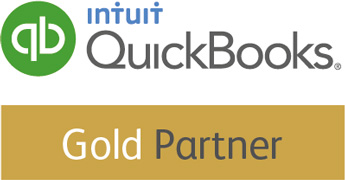It’s always worrying when you notice that your small business’ bank account is running low. Whether you’re scaling up or simply going through a quiet period, negative cash flow can take a significant toll on the financial health of your business.
Hard times don’t have to spell the end for your enterprise, however. It’s time to re-evaluate your current practices and employ some of the following steps to ensure that your bank balance bounces back.
1. Re-Evaluate Your Pricing Structure
Difficult financial times are a sure sign that it’s worth reconsidering your pricing structure and making some changes. It’s entirely possible that you’re undervaluing your services and selling yourself short. Take time to consider the value you provide and research your competitors’ rates, too.
Of course, your existing customers won’t be happy if you hike up your prices overnight. It’s fine to charge new customers higher prices from the get-go, but implement more gradual price changes for your existing customers and give them plenty of notice. You deserve to get paid what you’re worth, but during difficult times the last thing you want to do is aggravate your entire customer base!
2. Cull Your Software Subscriptions
Over time, software subscriptions mount up and many business owners continue paying for software that they’ve ceased to use. Make a list of your subscriptions and only carry on paying for the ones which truly deliver value to your business. You’ll be surprised how much money this simple step can save you, especially over the course of several months.
3. Reduce Your Wage
For short-term cash flow issues, taking a smaller wage as a business owner can help to smooth things over. Obviously, you deserve to get paid but foregoing a chunk of your salary for a month or two may be able to protect your business’ bank balance until cash begins to flow more freely again.
4. Go Green
Power usage tends to be one of the largest costs for a small business, so cutting down on energy costs can really help you to save money. Installing energy saving bulbs, investing in insulating blinds and replacing paper towels with hand dryers can significantly reduce your monthly energy bill.
5. Shorten Your Payment Schedule
Many businesses allow their customers or clients up to 90 days to pay invoices, but if your funds are dwindling, it’s time to reduce this window. Cash flow is just as important as profit to the survival of your business and if you run out of available funds now, getting paid in two or three months’ time won’t help you much. Consider shortening your deadlines to 30 days or less to improve your cash flow and create a more continuous stream of funds.
6. Don’t Depend on a Handful of Customers
Of course, loyal customers are important to any small business, but becoming overly reliant on a small number of customers puts your business at risk. In this situation, losing a single customer can do significant damage to your finances, so don’t put all of your eggs in one basket.
Do nurture your existing customers and encourage them to spend more, but make sure your entire organisation doesn’t depend on repeat business from one or two sources. Taking on just a few new, smaller clients can really help when your bank account is suffering.
A dwindling bank account is never good news for a small business, but it’s not necessarily a death toll.
By taking action today and implementing the above money-saving steps, you can get your business back in the ‘green’ and improve both your profitability and cash flow.
Need help assessing where you are with your business? Get in touch!


